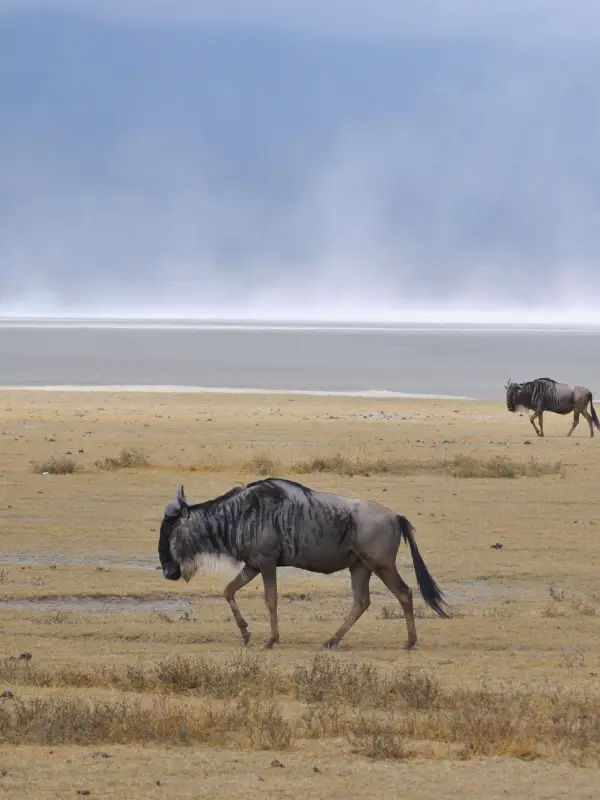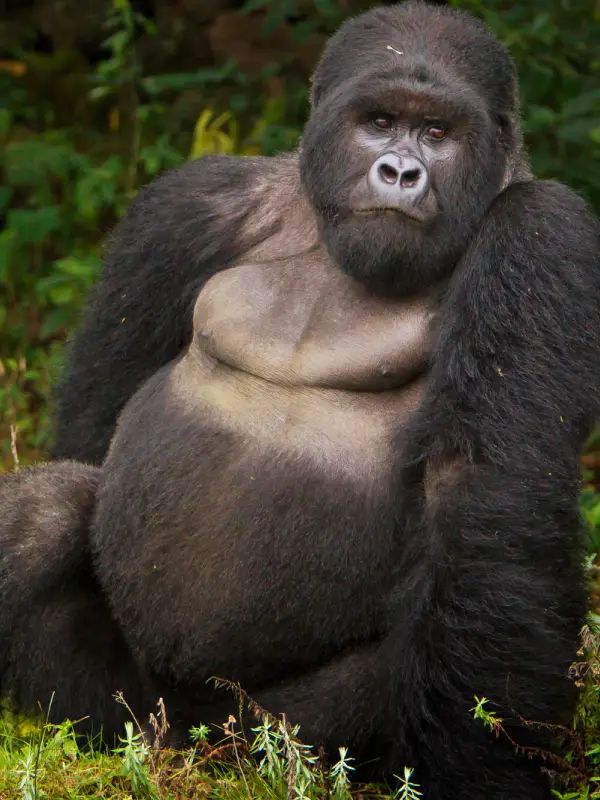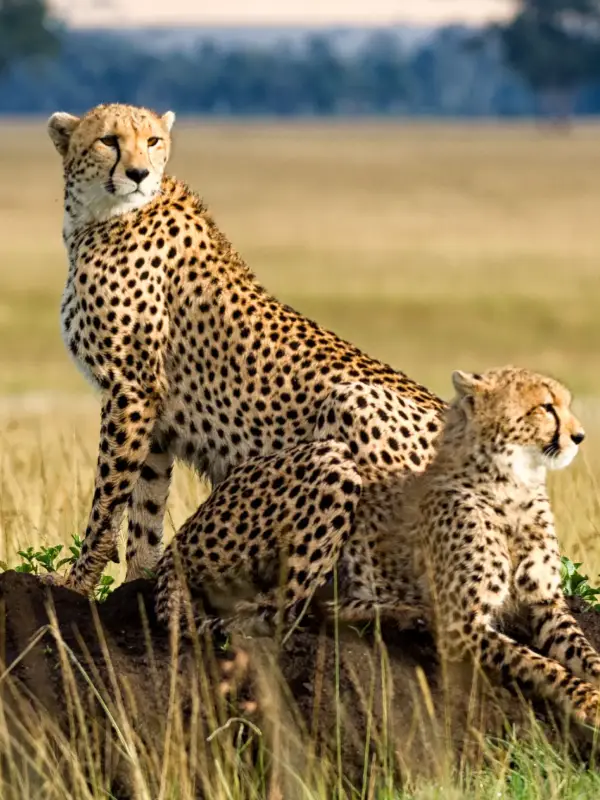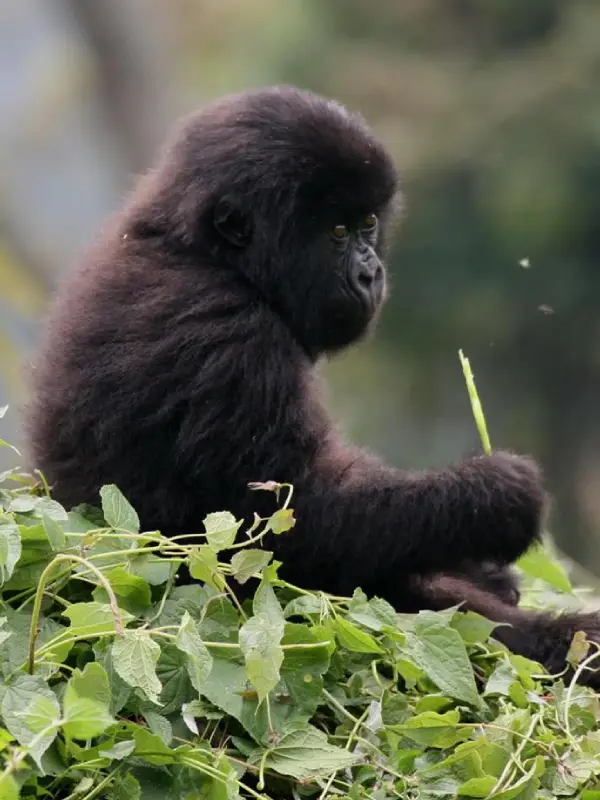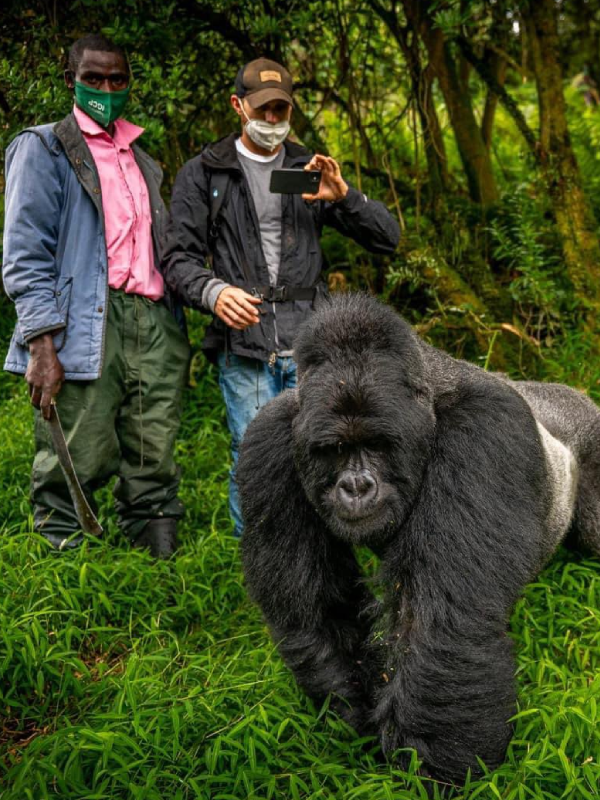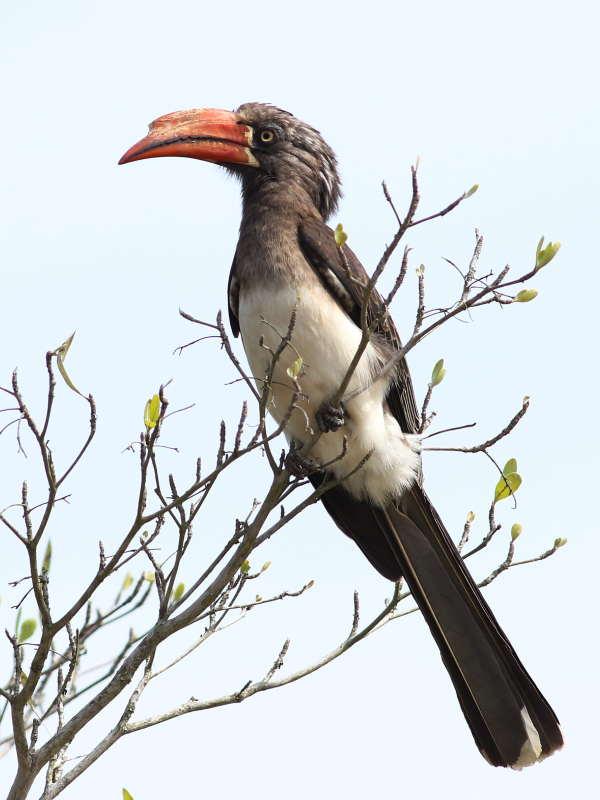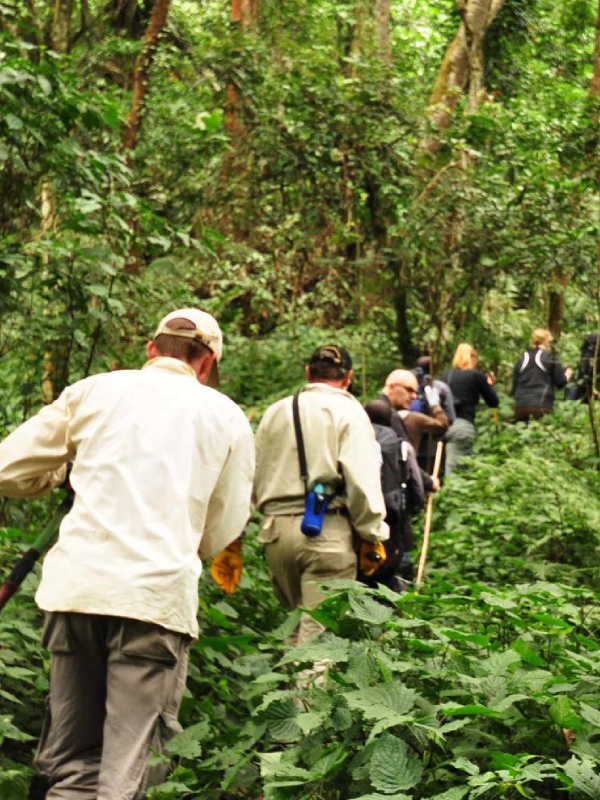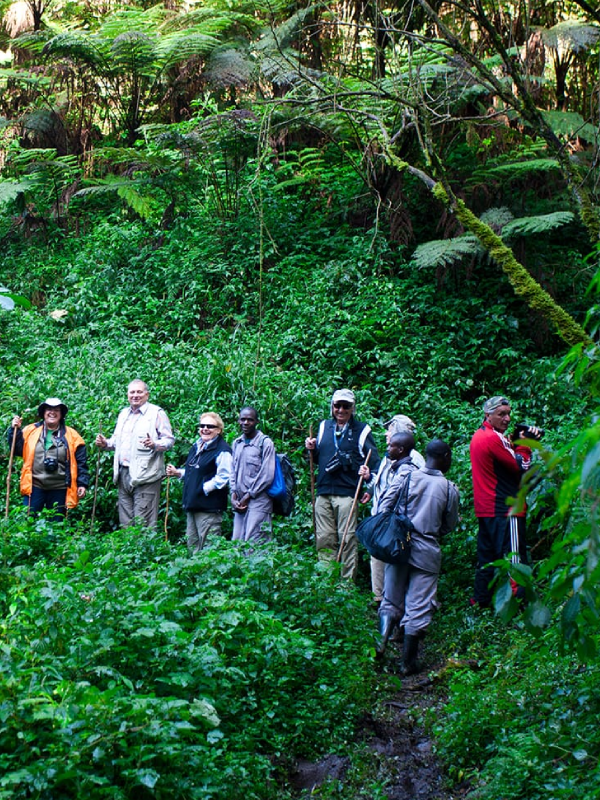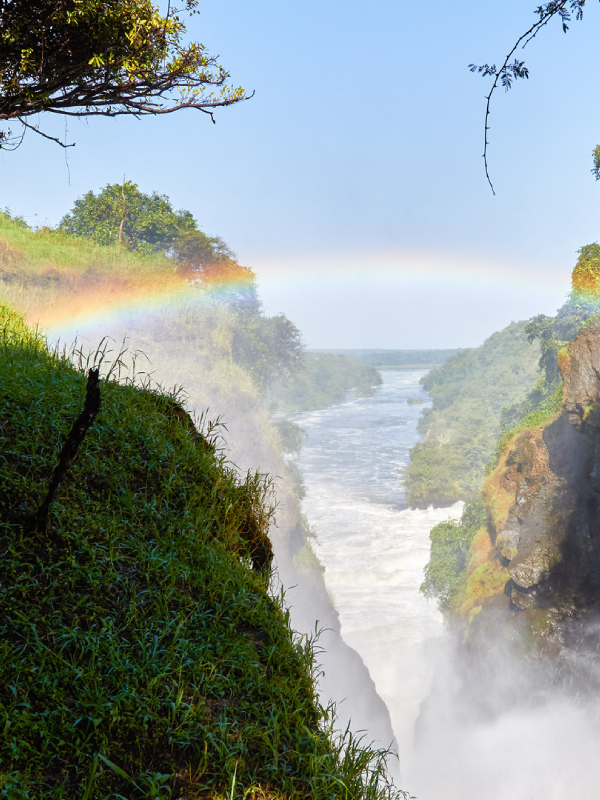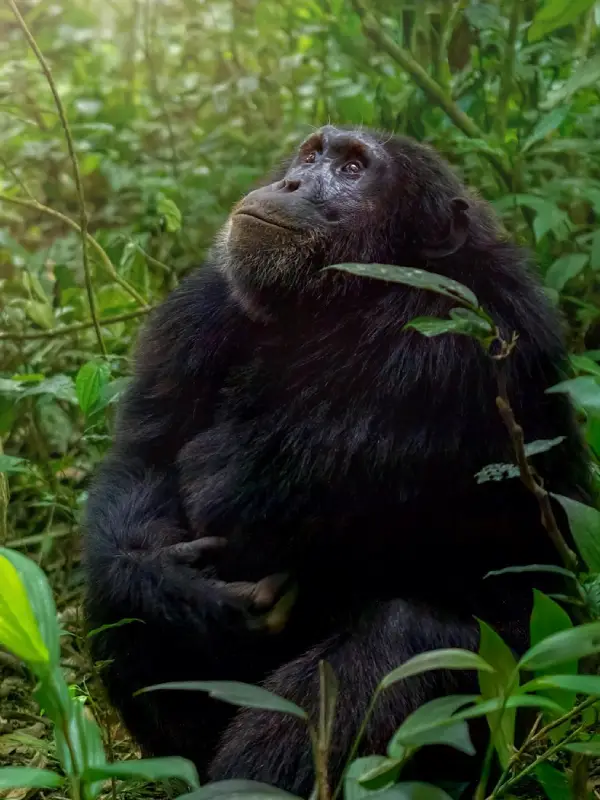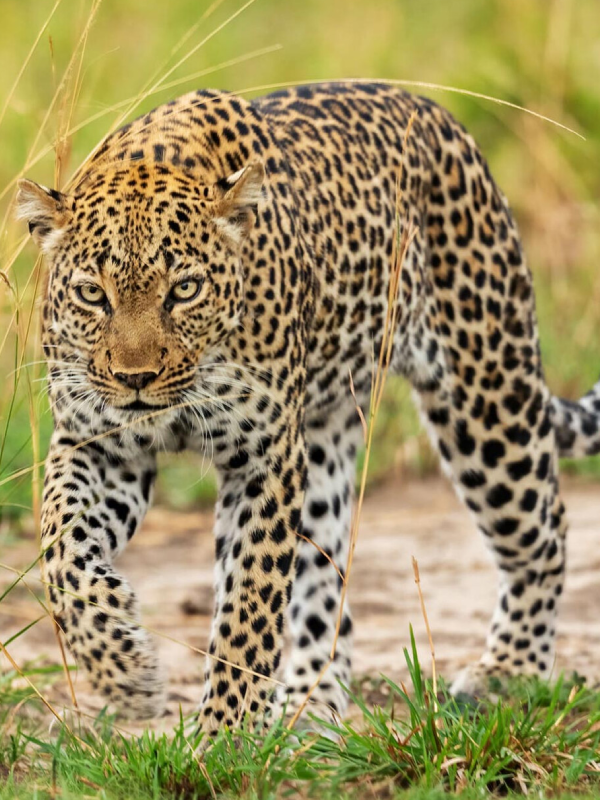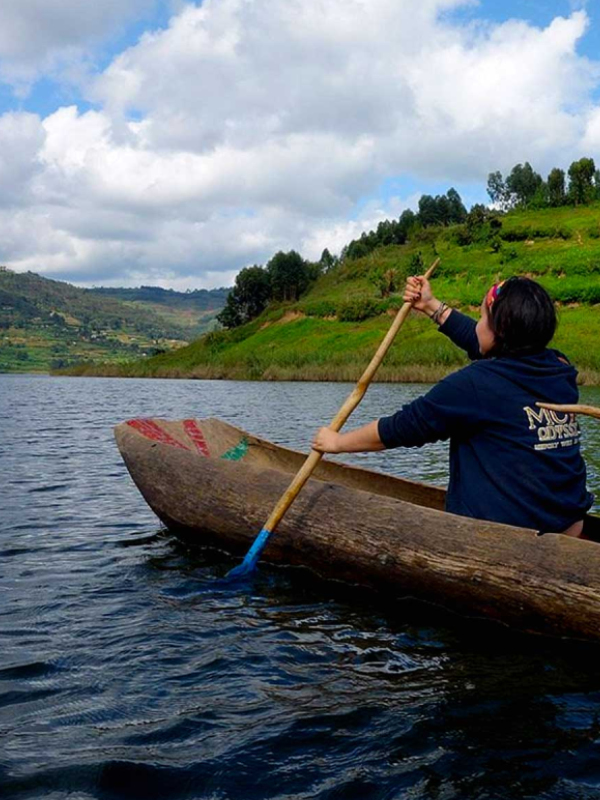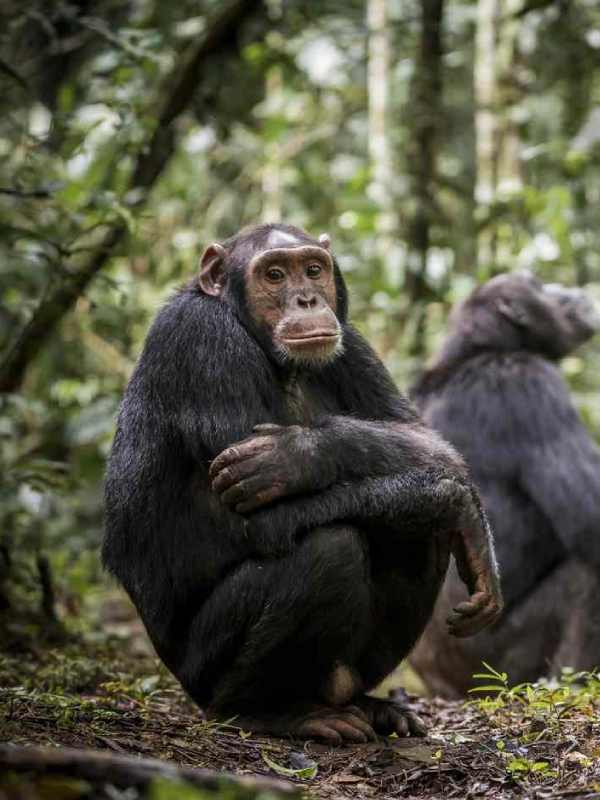Uganda
Bwindi Impenetrable National Park
Uganda’s crown jewel of gorillas, birds, and untouched rainforest.
Bwindi Impenetrable National Park, a UNESCO World Heritage Site, shelters about 460 mountain gorillas, around 43% of the global population. With over 350 bird species, including 23 Albertine Rift endemics, it offers unmatched gorilla trekking and exceptional birdwatching in Uganda’s pristine rainforest.
Area
331 sq km
Established
1991
Location
Southwestern
Altitude
1,160 - 2,607 m
Area
331 sq km
Established
1991
Location
Southwestern
Altitude
1,160 - 2,607 m
A misty wilderness alive with rare wildlife and timeless beauty.
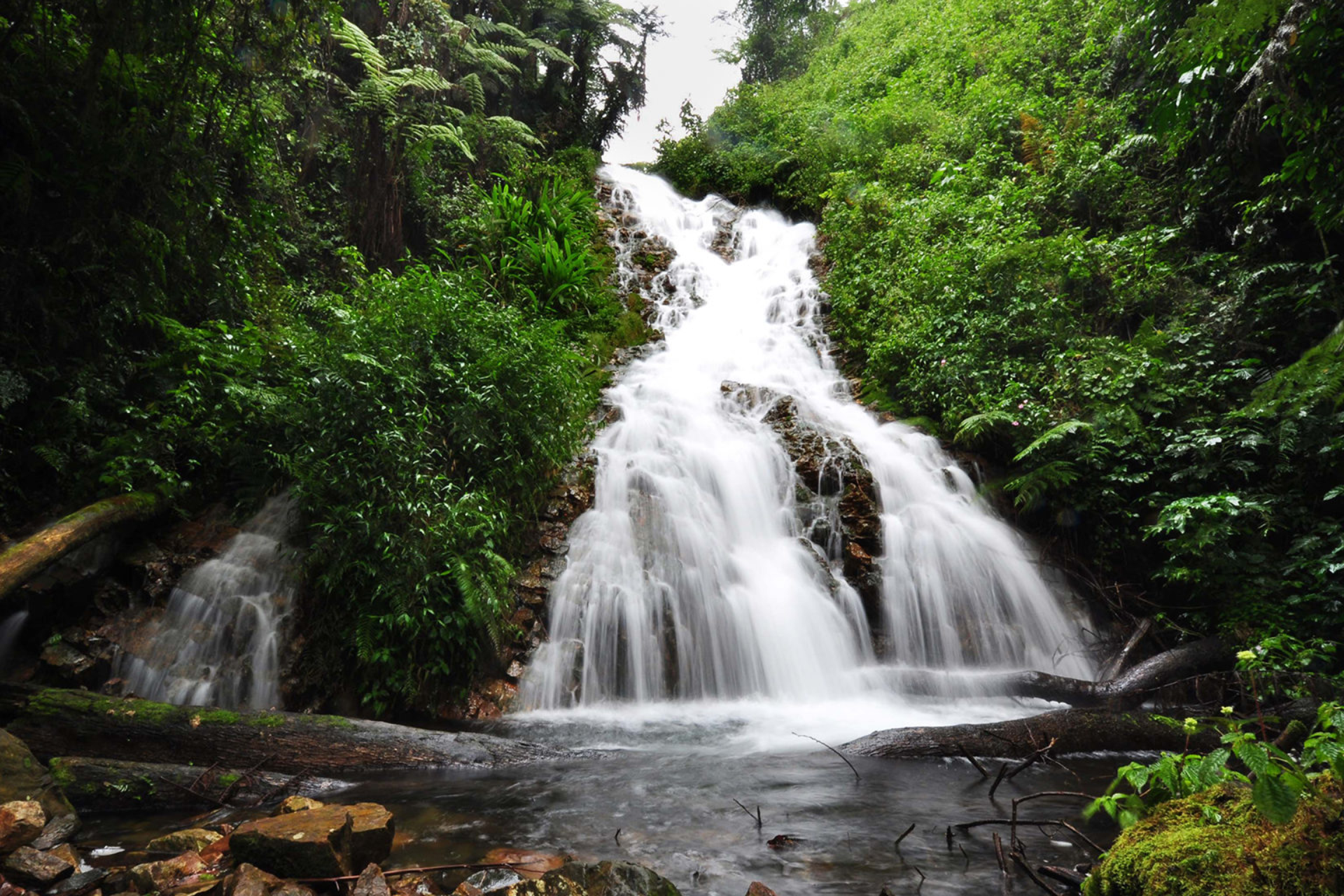
Bwindi Impenetrable National Park is a living relic of ancient Africa, blanketed in dense mist and teeming with hidden life. Its steep valleys and forested slopes create a breathtaking natural fortress.
This UNESCO World Heritage Site is home to nearly half of the world’s critically endangered mountain gorillas. Guided treks lead small groups deep into the wilderness, where intimate encounters with these gentle giants become unforgettable moments.
Beyond gorillas, the park shelters forest elephants, colourful butterflies, rare birds, and other primates beneath its lush canopy. Each step along the narrow trails reveals a new layer of its biodiversity.
Gorilla trekking begins at dawn, with skilled guides leading the way through challenging terrain. Depending on their last known location, the trek may be brief or an all-day journey, each ending with a rare, humbling hour in the company of Bwindi’s majestic gorilla families.
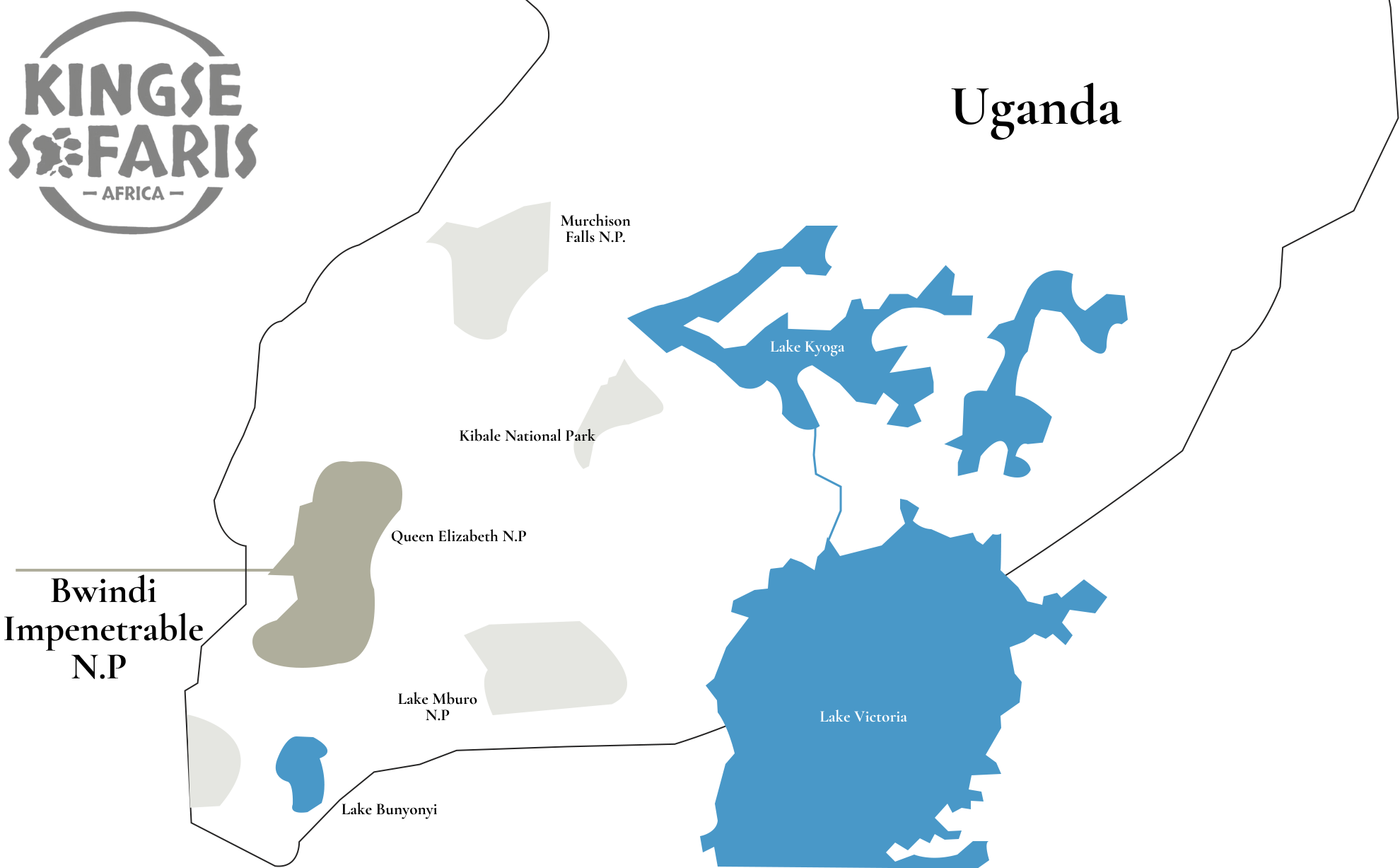
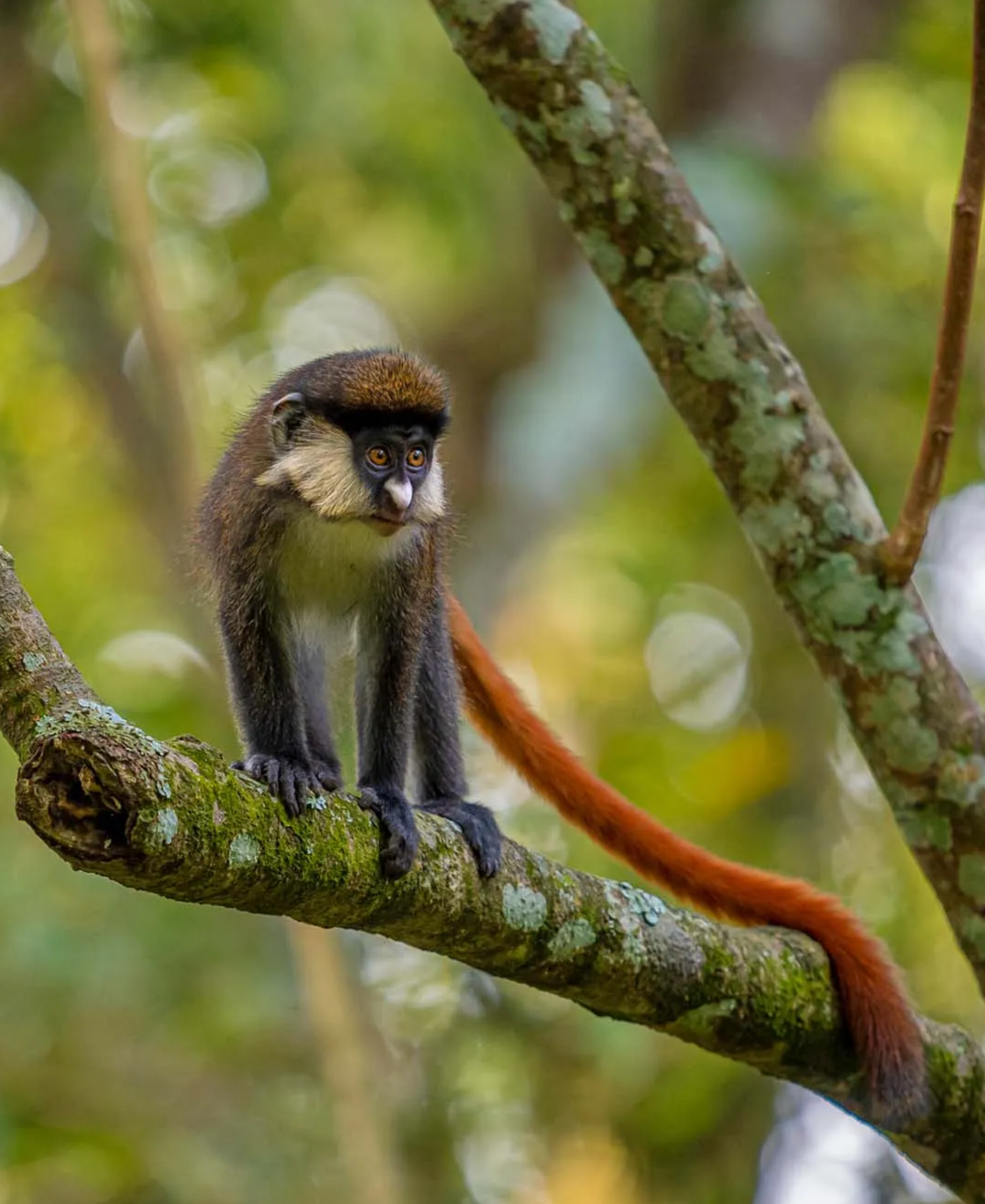
Best Time to Visit Bwindi Impenetrable
Bwindi is open all year, but June–August and December–February offer drier, less slippery trails. These months provide better trekking conditions, higher gorilla sighting chances, and clearer photography opportunities.
Best Time
June to August
High Season
June to September
Low Season
March to May
Best Weather
June to July
Best Time
June to August
High Season
June to September
Low Season
March to May
Best Weather
June to July
Discover East Africa's Best Safari Packages
7 Days Tanzania Safari
5 Days Rwanda Safari
7 Days Kenya Safari
7 Days Uganda Safari
Discover Why Bwindi Is Worth Every Step
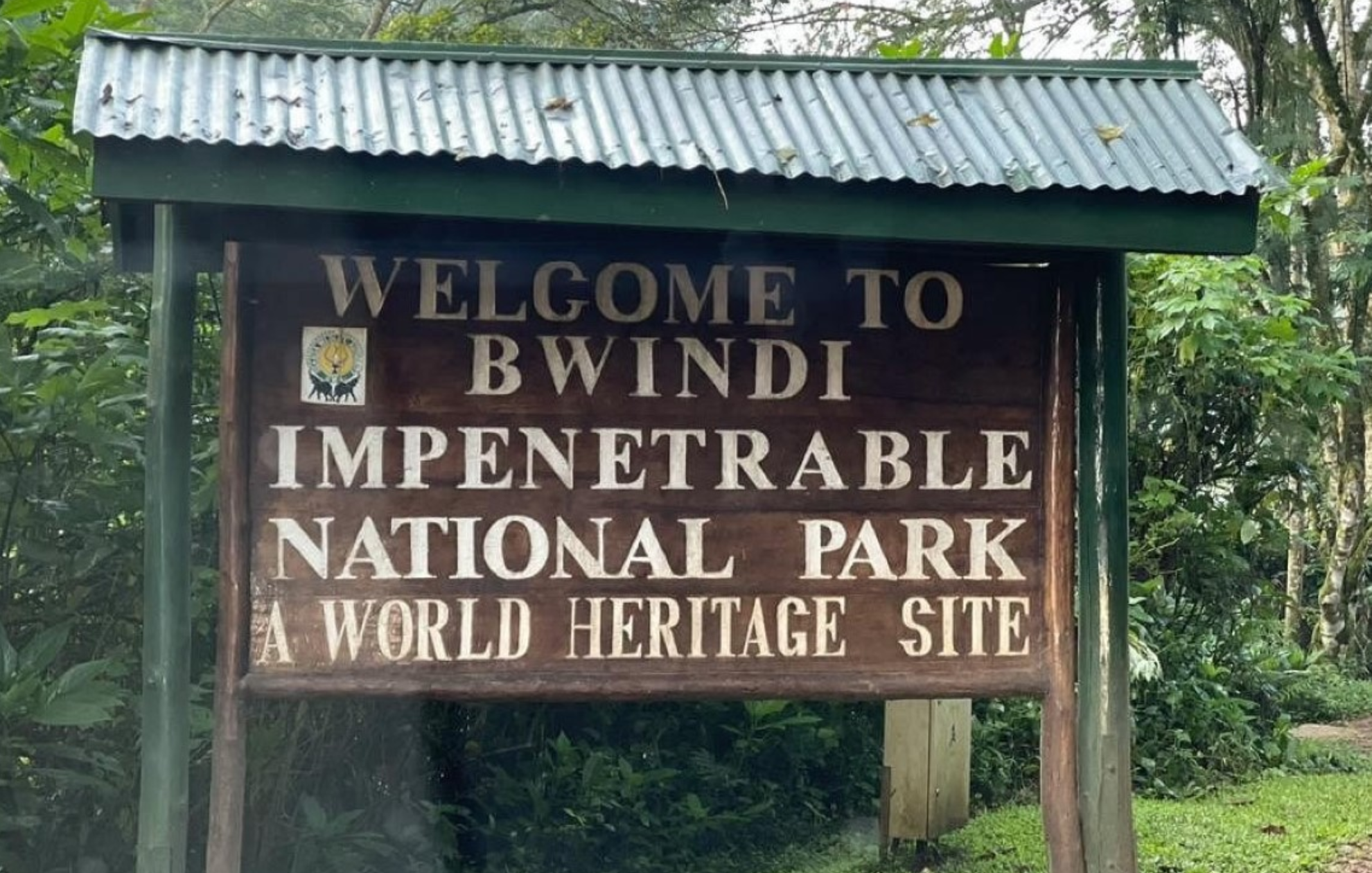
Bwindi Impenetrable National Park is a vast rainforest filled with rich plant and animal life. Its slopes and valleys are covered with thick vegetation that shelters rare species and makes the forest feel alive.
The park is home to endangered mountain gorillas, and guided treks allow visitors to see them in their natural surroundings. Spending time with these gentle animals is one of the most memorable wildlife encounters in Africa.
Bwindi also has many other species, including colobus monkeys, forest elephants, butterflies, and hundreds of colorful birds. Walking through the forest gives visitors a chance to enjoy its variety of wildlife.
Visitors can also meet local communities living near the park. These encounters provide opportunities to learn about traditions, crafts, and daily life, making a trip to Bwindi both a natural and cultural experience.
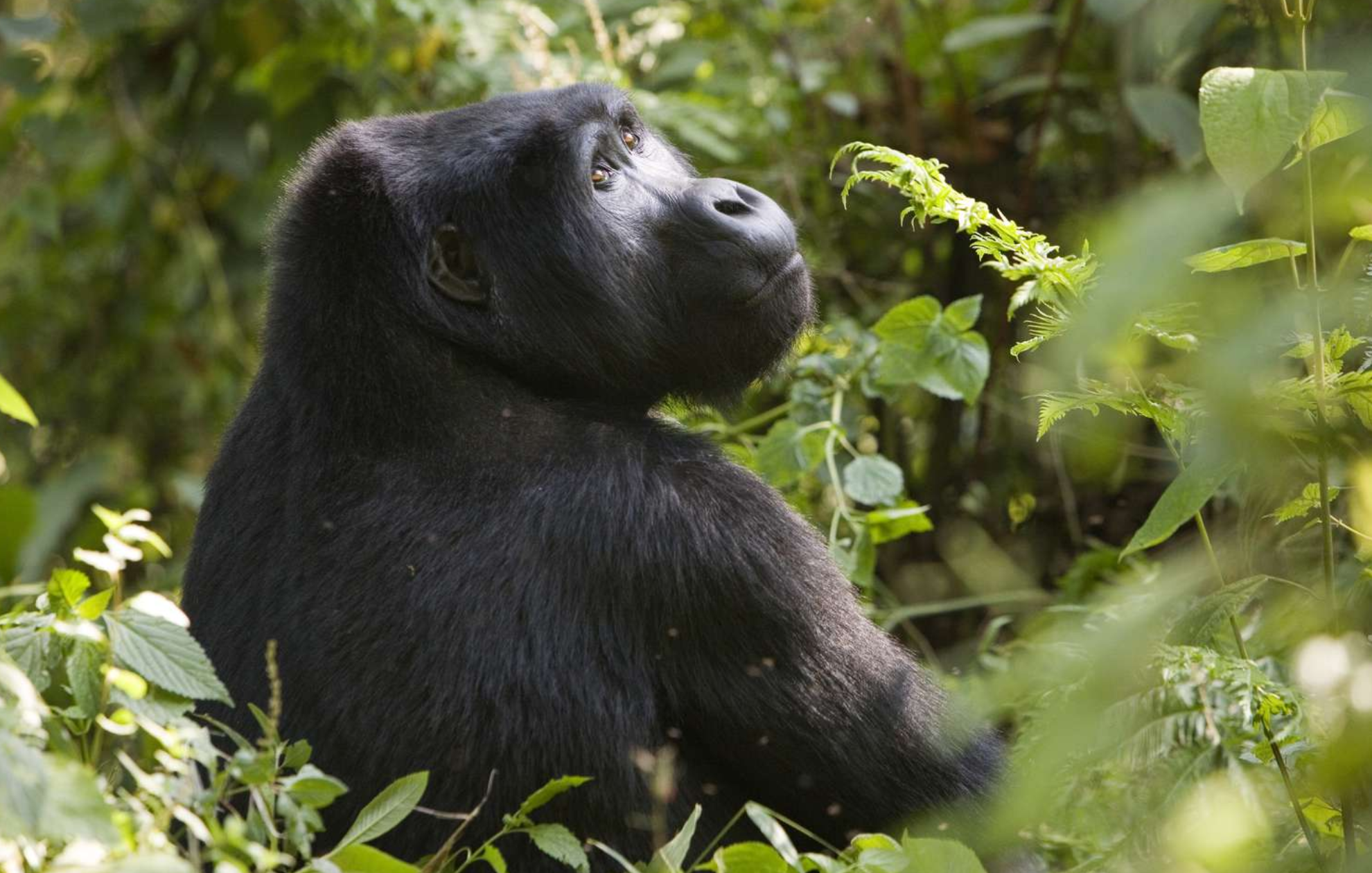
Frequently Asked Questions About Uganda Safari Adventures
Uganda is full of unique safari experiences, from gorilla trekking to wildlife safaris. Here are answers to common questions to help plan your journey with ease and confidence.
What makes Uganda a special safari destination?
Uganda is home to over half of the world’s mountain gorillas, making gorilla trekking its highlight. It also offers chimpanzee trekking, diverse wildlife, snow-capped mountains, and savannah safaris all in one trip.
When is the best time to visit Uganda?
Uganda can be visited year-round, but the drier months of December to February and June to September provide easier trekking conditions and better wildlife sightings. Rainy seasons make trails more challenging but still rewarding.
Is Uganda safe for travellers?
Yes. Uganda is considered safe for visitors, with hospitable locals and well-organized safari operators. Guides ensure your comfort, and most areas frequented by tourists are secure and welcoming.
Is Uganda expensive compared to other safari destinations?
Uganda is more affordable than Kenya, Tanzania, or Rwanda. While gorilla permits add cost, overall safari prices remain budget-friendly, with options ranging from mid-range to luxury experiences.
What kind of food can I expect in Uganda?
You’ll find fresh, international-style dishes at lodges, often made with local produce. Some properties host “Ugandan nights” featuring traditional meals such as matoke, grilled meats, and maize-based dishes.
Do I need to be fit for gorilla trekking?
Yes, moderate fitness is required. Treks can last up to six hours through hilly, forested terrain. Chimpanzee trekking is usually shorter but still requires comfort with walking long distances.
Is Uganda suitable for family travel with children?
Absolutely. Ugandans are welcoming to families, and safaris can be tailored for all ages. Children under 15 cannot trek gorillas, but they can enjoy other wildlife and cultural activities.
Can I travel solo in Uganda?
Yes, Uganda is popular with solo travellers. Guides ensure safety, and small lodges offer friendly environments to meet other travellers. Solo itineraries can also be customized for flexibility and budget.
How far in advance should I book a safari?
For gorilla trekking, book at least 12–18 months ahead as permits are limited and in high demand. For other activities, a few months ahead is usually sufficient.
How do travellers get around in Uganda?
Most safaris use 4WD vehicles for road trips between parks. Domestic flights on small aircraft connect key destinations like Bwindi and Murchison Falls. Both options provide scenic and safe travel experiences.
Unique Ways to Enjoy Bwindi Forest
Gorilla Trekking
Birding Safari
Guided Forest Walk
Visit Communities
Uganda Travel Treasures
Uganda Safari Gems
Explore Uganda’s parks, forests, and wildlife.
From gorilla trekking in Bwindi to tree-climbing lions in Queen Elizabeth and chimpanzee encounters in Kibale, Uganda’s destinations promise unmatched adventure, scenic diversity, and memorable wildlife experiences for every traveler.
Creating Your Dream Safari, The Way You Want it
Kingse Safaris Africa offers customized tours tailored to your needs. Everything about your trip can be altered to suit your travel style, from the activities to the schedule. Join us and design your dream journey with us!








